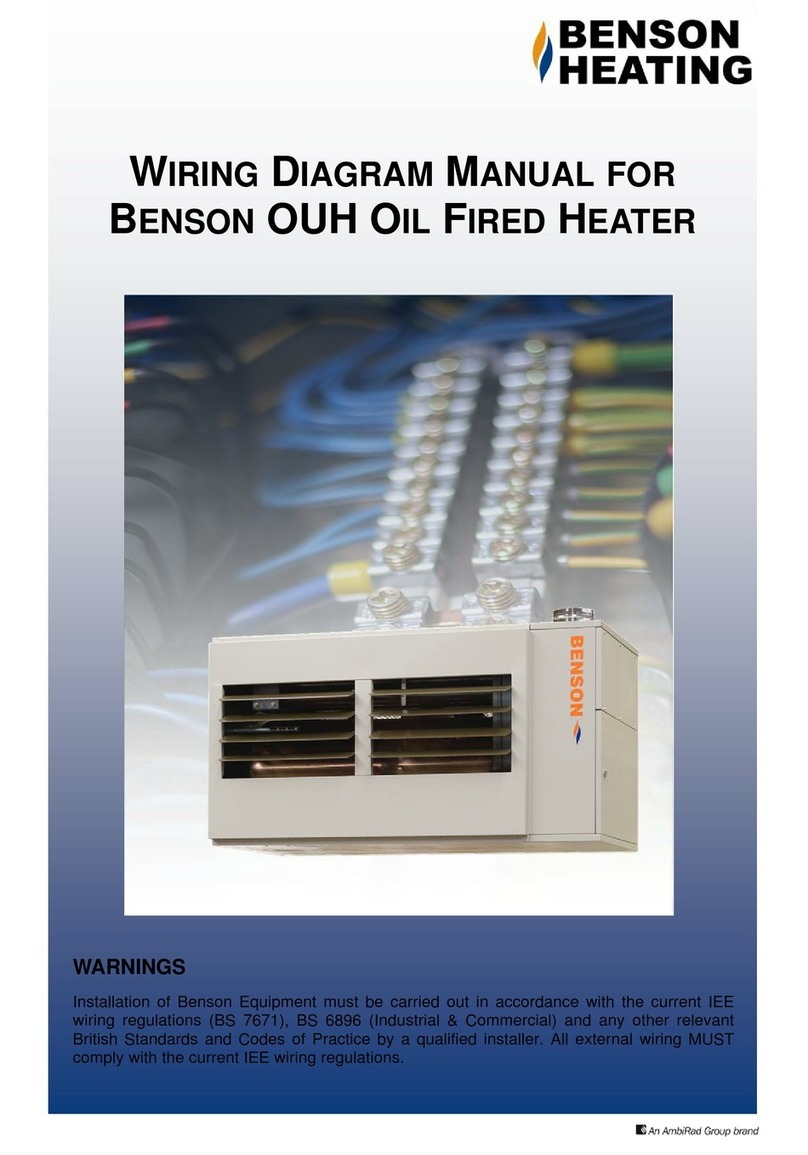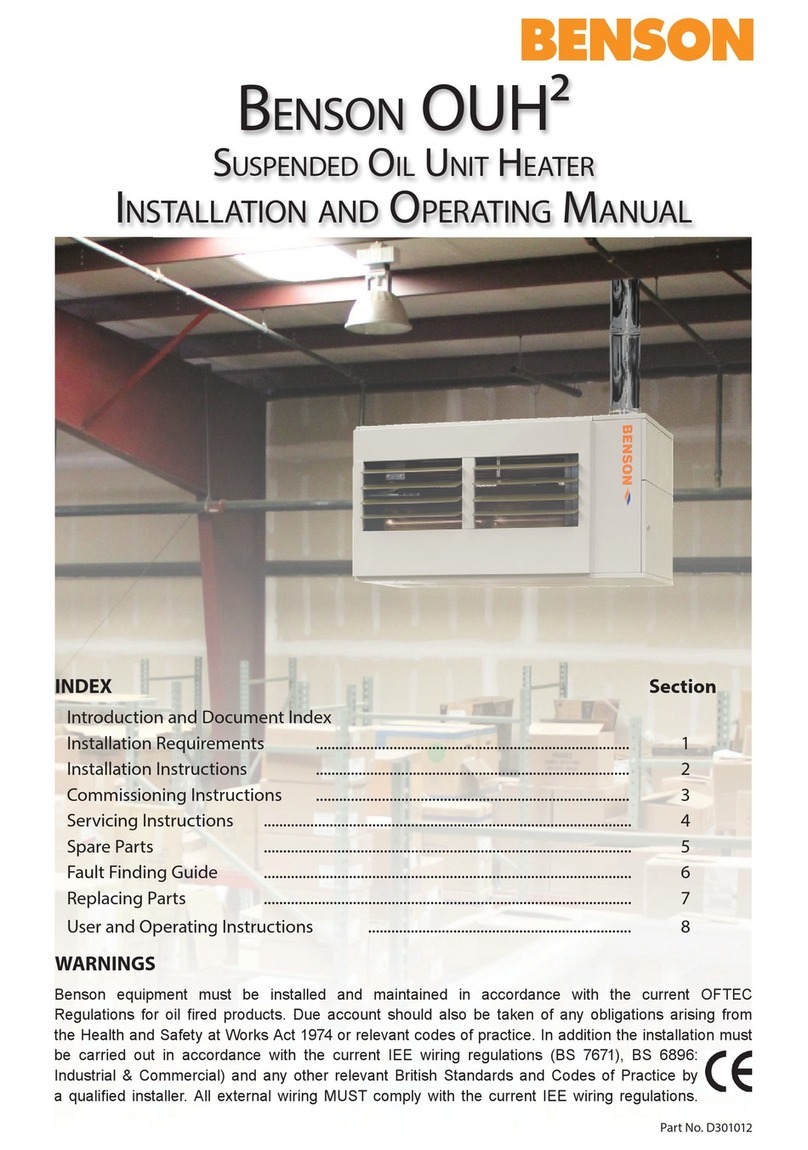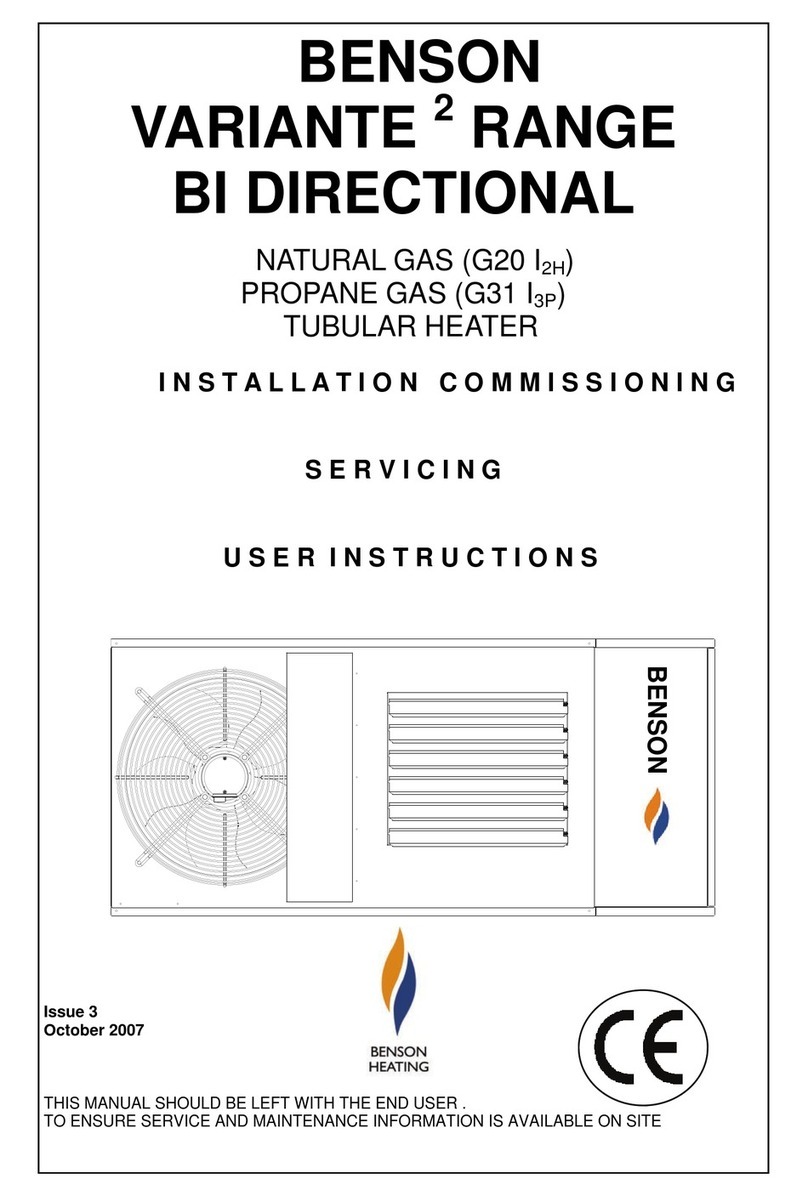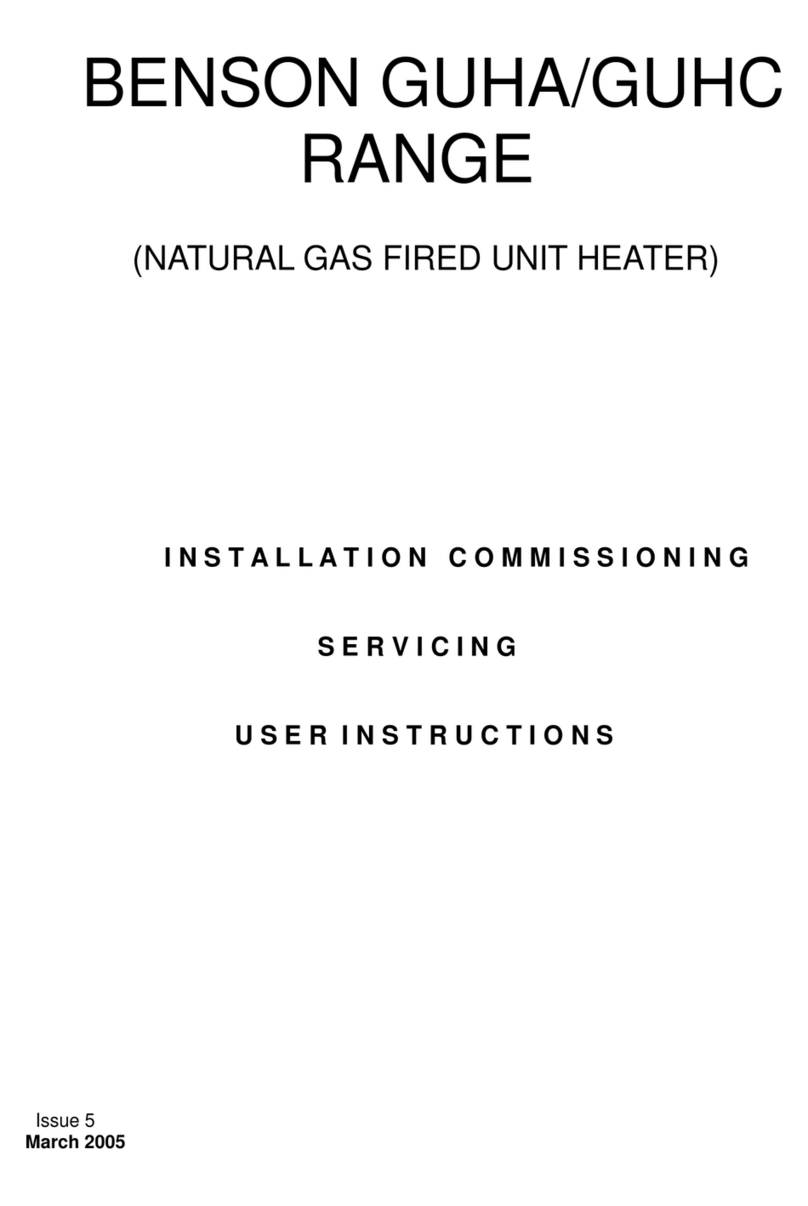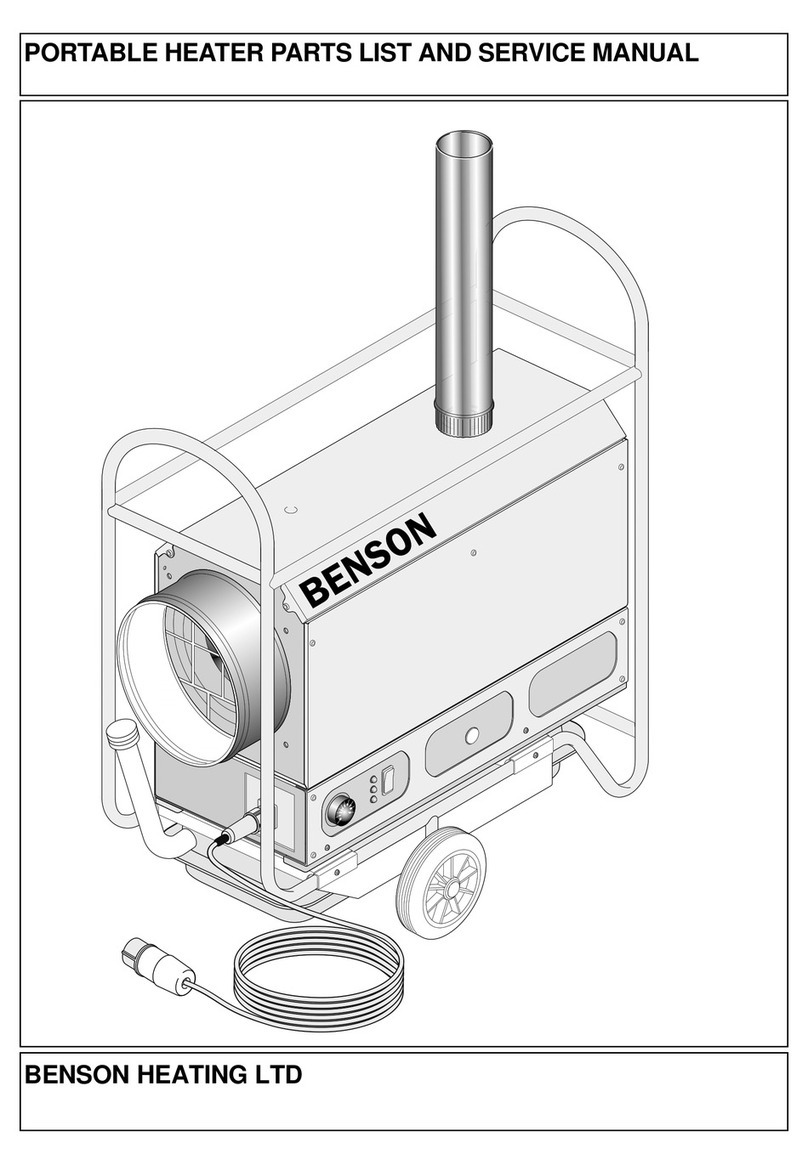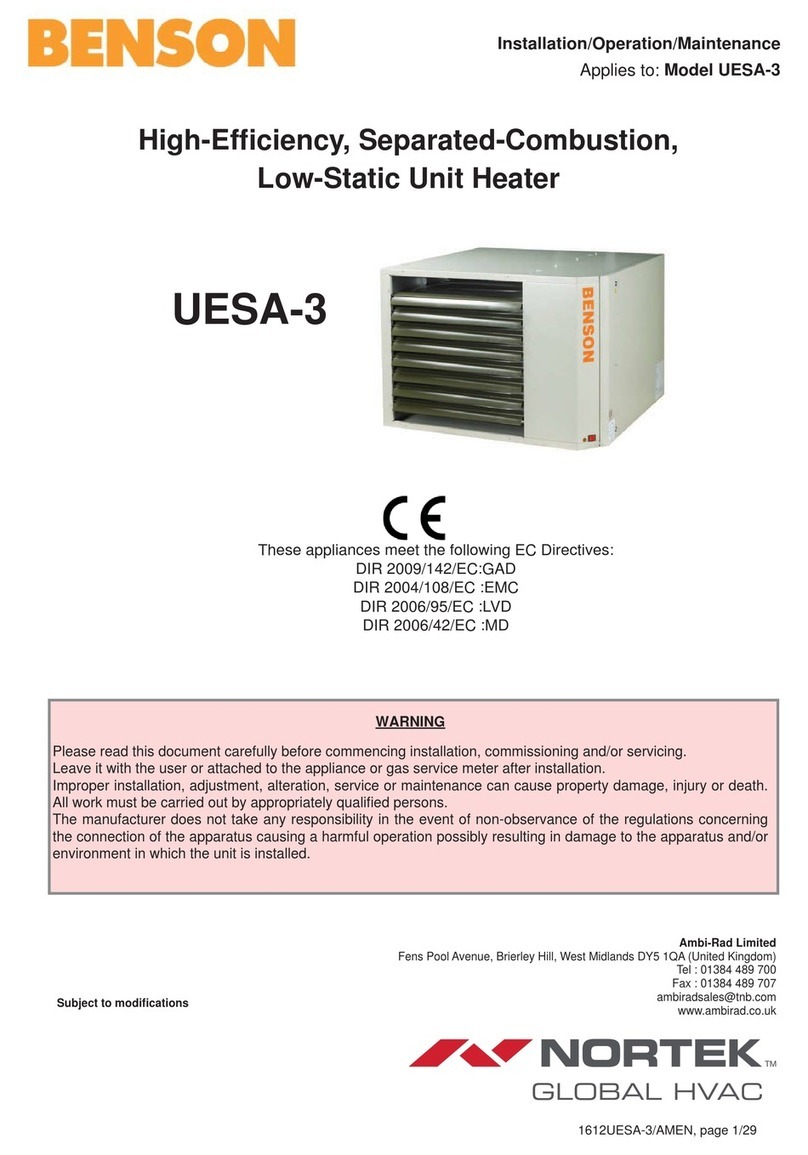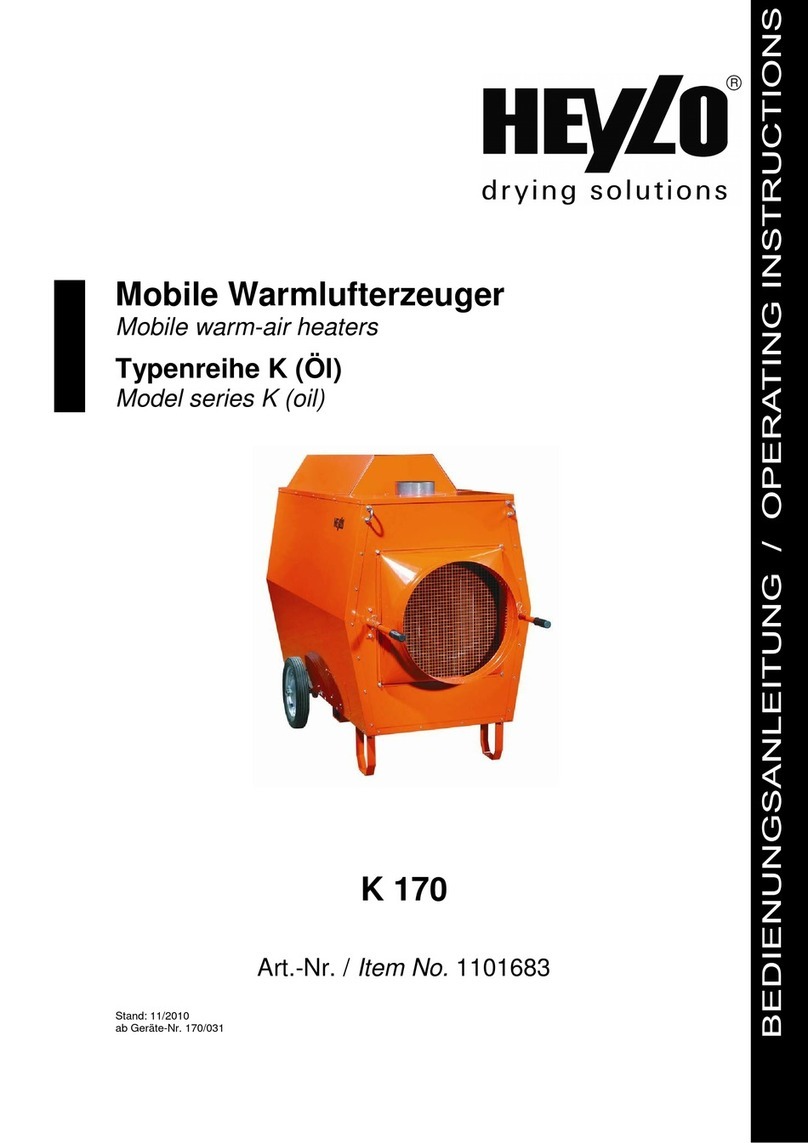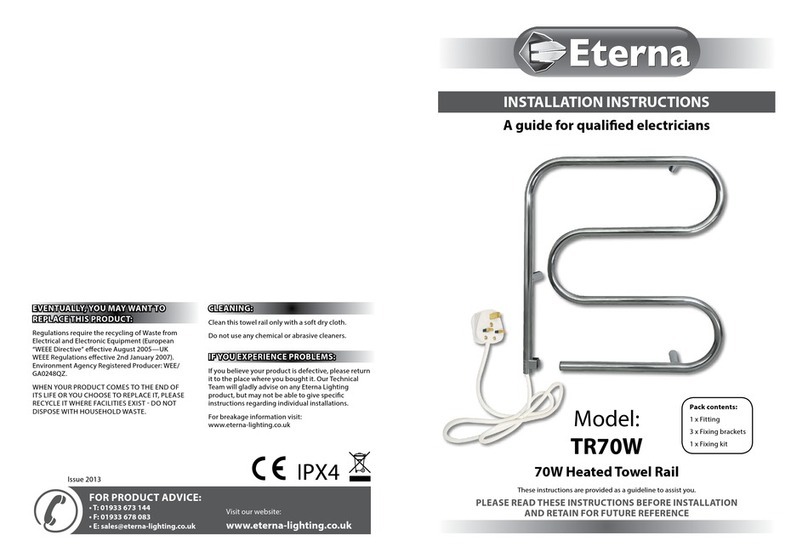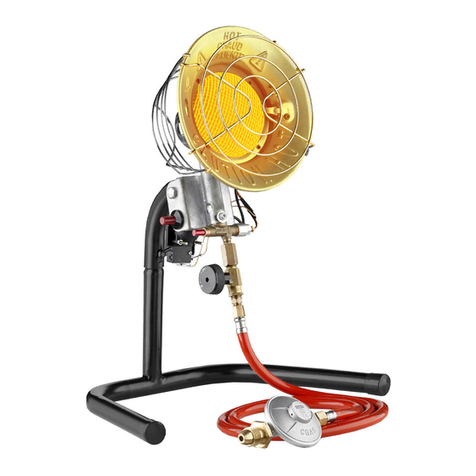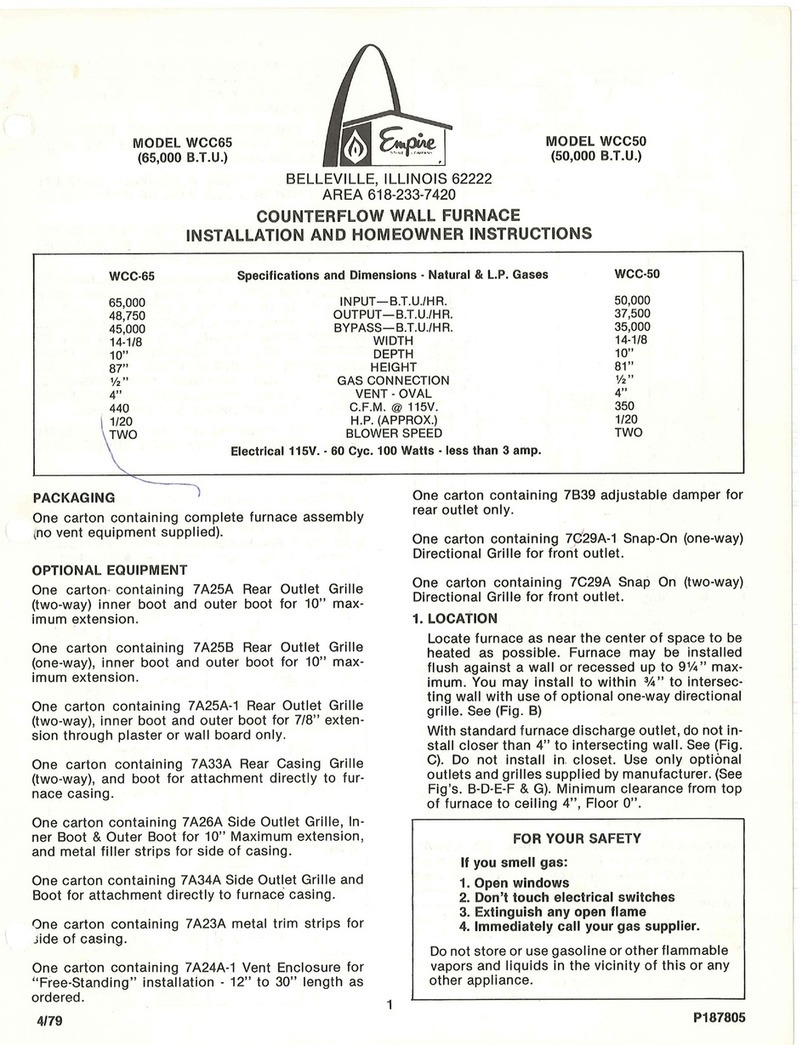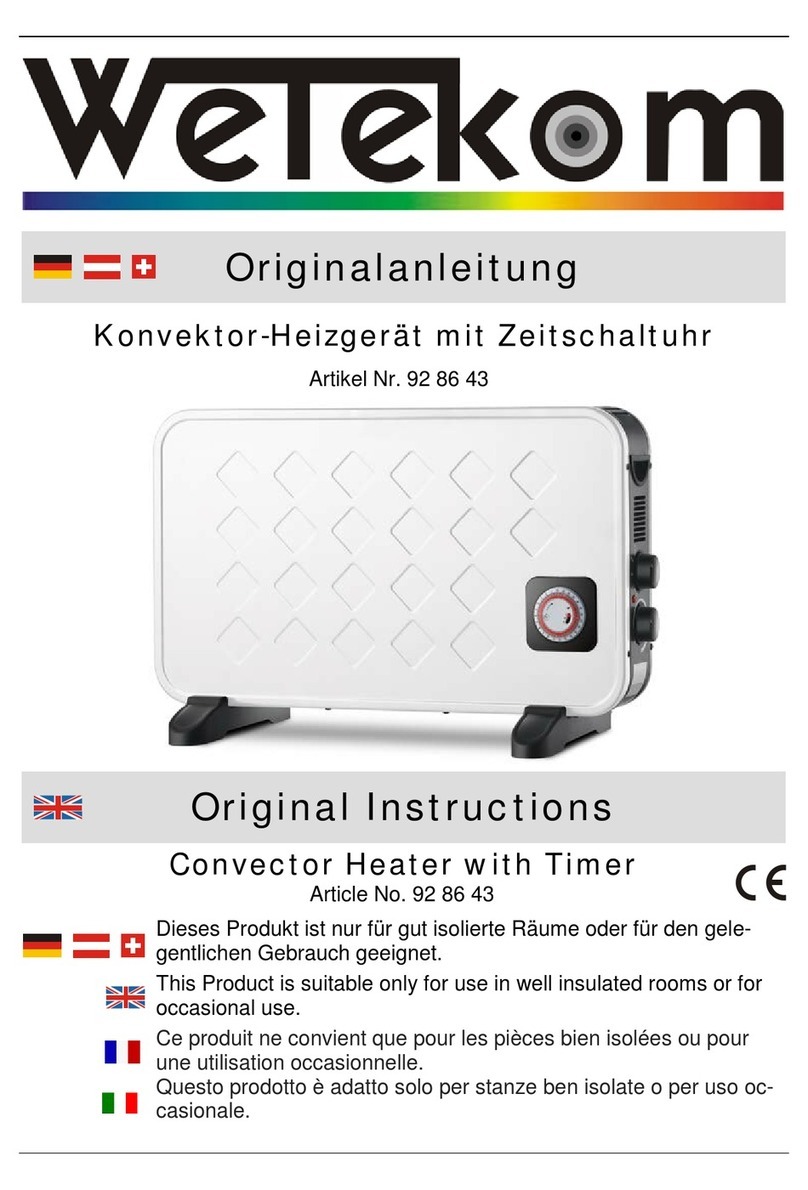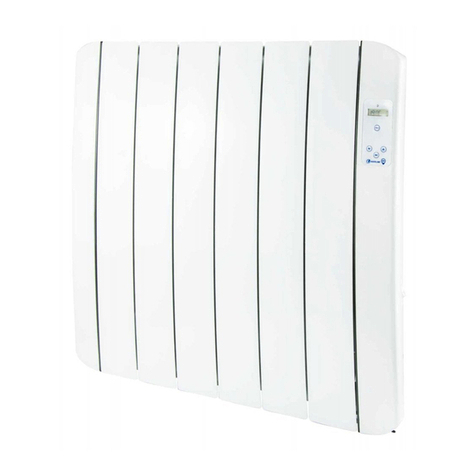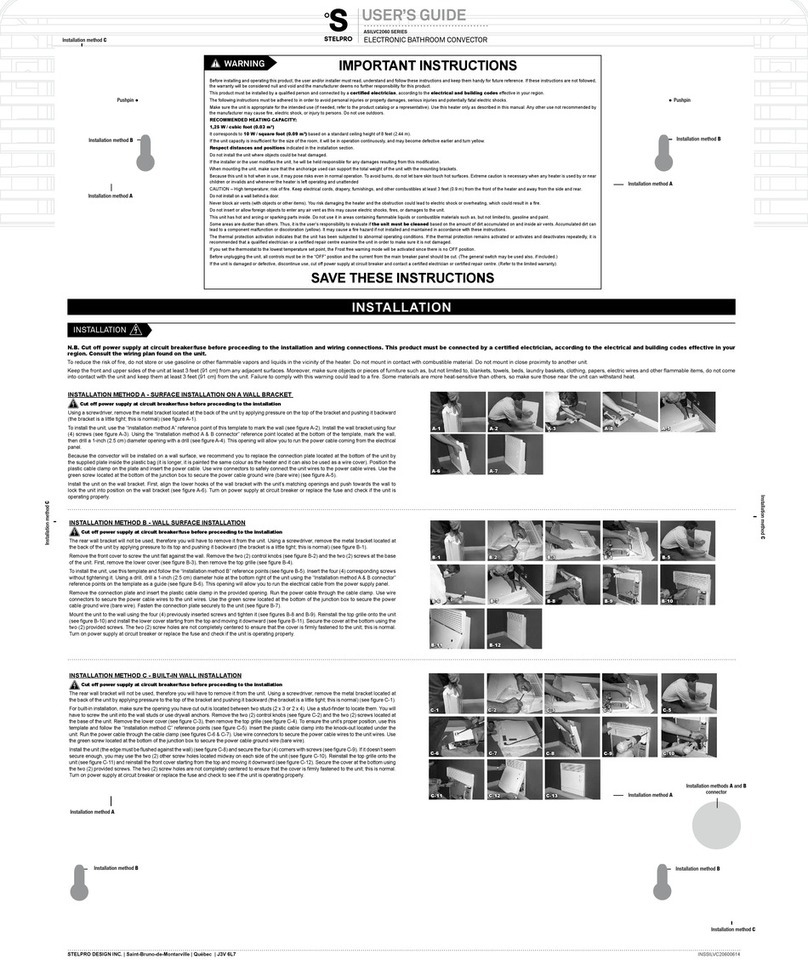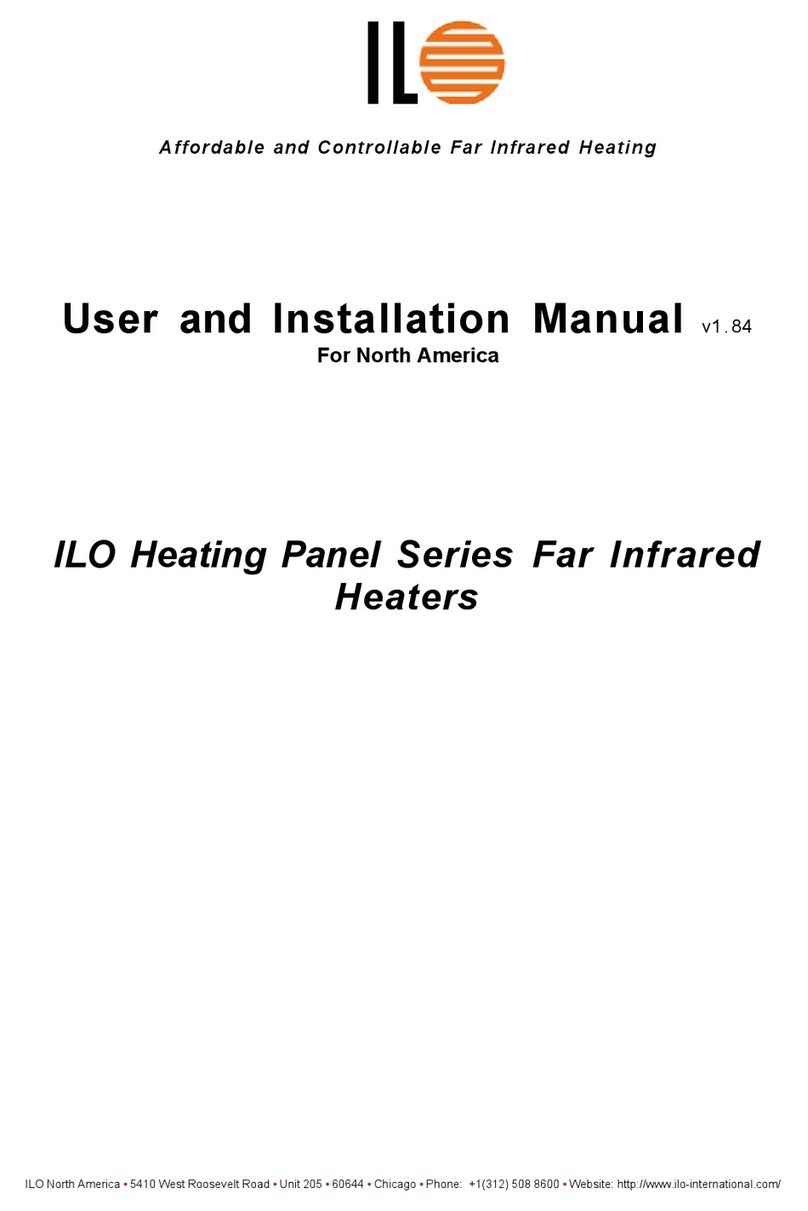
7
Warning
All of the basic criteria must be satisfied
prior to commencing installation and
commissioning, additionally, the Unit Heater
must be positioned and installed so as to
comply with all the relevant standards and
guide lines (see section 9.0), as well as
meeting National and Local Fire Regulations
and Insurance criteria, especially if it is
proposed that the heater is to be installed
within a special risk area (e.g. proximity to
where petrol engined vehicles are stored or
parked, where cellulose spraying takes
place, where woodworking machinery is
operated, etc,).
Indirect fired heaters must not be located in
hazardous areas, however, it is permissible
for the heater to supply air to such areas.
The heater must not be installed within an
environment where there is a high
concentration of chlorides, fluorides, salts, or
other aggressive or volatile chemicals/
compounds. Nor should the heater be
positioned where high winds or draughts
could adversely affect the burner.
The heater must be installed so that it is
level. Supports for the heater must be
sufficiently robust to withstand the weight of
the heater and any ancillary equipment. Any
combustible material adjacent to the heater
or flue system must be so placed or shielded
so that its surface temperature does not
exceed 65°C
The location chosen for the heater must
allow for the fitting of an effective flue
system.
The location must also allow for adequate
clearance for the air supply, return air
circulation, oil supply, electrical supply,
whilst also providing good and safe working
access.
Suspended free blowing Unit Heaters are at
their most effective when located as close to
the working area as possible. However care
should be exercised to avoid directing the
discharged air directly onto the occupants of
the area to be heated.
Where the passage of cold air causes
problems (e.g by entrances, loading bays
etc) it is considered favourable if the heater
is positioned so as to discharge towards or
across the cold air source from a distance
from 1.5m - 6m dependent upon the size of
the entrance and the air throw
characteristics of the heater.
On exposed walls heaters should be
positioned so as to discharge towards, or
along the length of the exposed wall. In
areas where it is proposed that more than
one heater is to be installed, a general
scheme of circulation should be drawn up
and maintained, thereby offering the best
heat distribution.
Air pressure within the area heated and the
outside air pressure must remain the same,
factors influencing this would be the
presence of extraction systems, ventilation
systems, and various types of process plant.
OUHA 60-100 models can be installed to
allow the fans to work in opposite directions.
This enables the heater to be installed
centrally in the area to be heated and allows
warm air to be discharged to both the front
and rear of the heater.
2.1 Fuel supply - general
The Benson range of oil fired heaters are all
manufactured and pre-set for use with 35
second gas oil delivered to the burner via a
suitable piped system from the oil storage
tank.
Galvanised or plastic pipe work and
fittings must not be used. (see BS 5410
Part 1 1997)
The constraints of the application will, to a
large extent, determine whether it is
preferable to use a single pipe gravity feed
system, or whether the two pipe pumped
system is more appropriate.
Where more than one appliance is to share
a common supply it will be necessary to use
a pressurised ring main system.
2.0 Location/positioning

